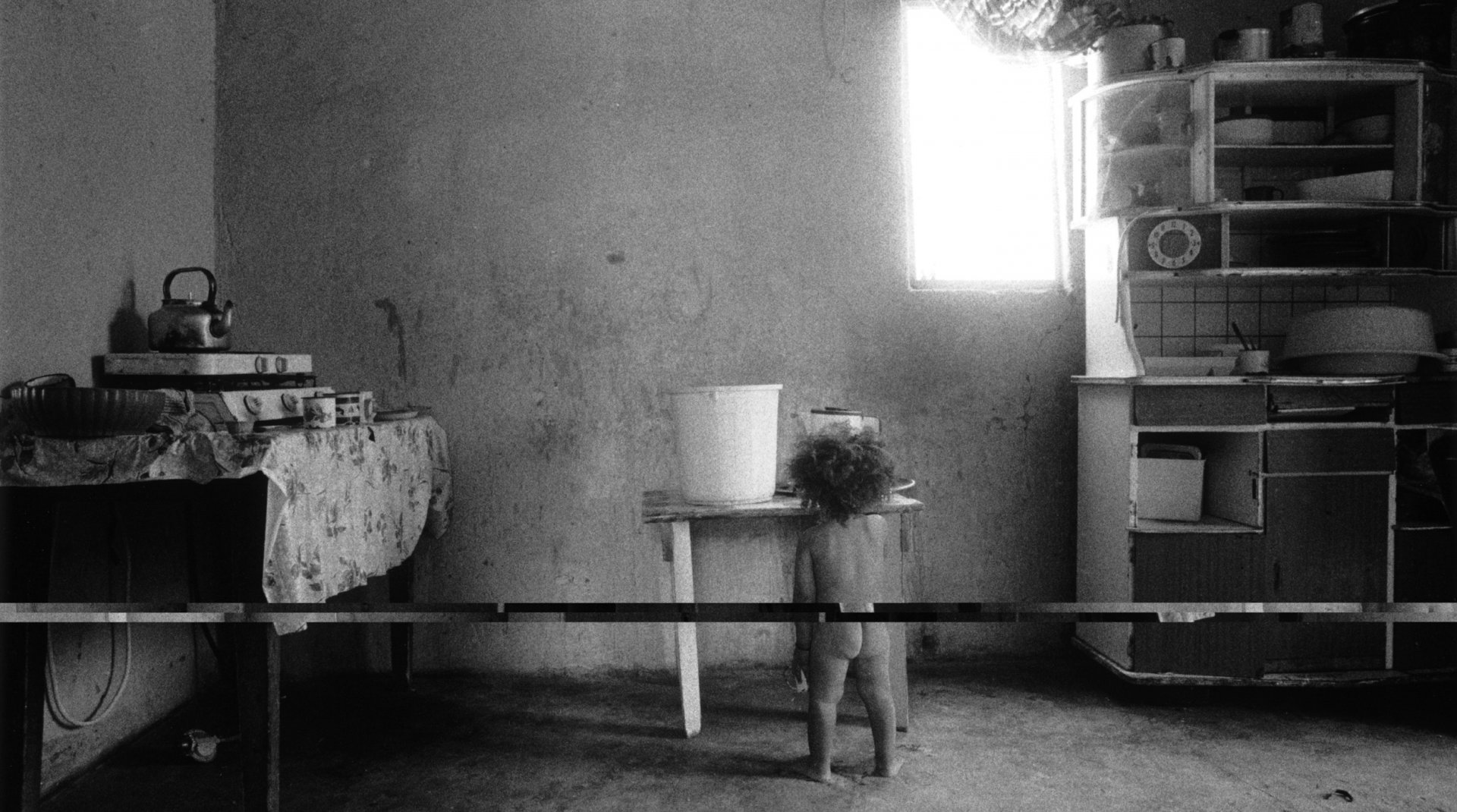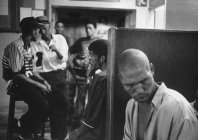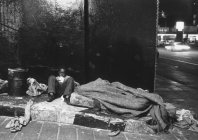
South African Stories (1995 - 2001)
Jodi Bieber
Network / Rapho
When Hector Peterson was killed in the Soweto Uprising in 1976, I was 10 years old, living in a middle-class suburb, protected from the realities of what was happening in South Africa. My existence through my youth was about rebelling against my family and school system, and surviving boyfriend and girlfriend hurts.
I started my personal project in 1995, after the first democratic election in South Africa. Photography was my vehicle to explore my country and its people. I had been photographing the country’s transition since 1993 for The Star Newspaper and had now been exposed to what I had been sheltered from all my youth. I had witnessed pain, suffering, poverty, cruelty, death and joy. This included the death of 3 fellow South African photographers. Psychologically, I was in a dark place.
In 1995 I met David Jakobie, a 19 year old living in Vredapark , Johannesburg - a predominantly conservative white lower-class Afrikaans area with strong ties to The National Party and AWB. These communities were often protected by the old regime with jobs and council housing but now their days of protected employment and housing were over. David was outspoken, living life on the edge and he allowed me to enter into his world. Many of the individuals I met through David were involved in criminal activities, smoked mandrax and crack cocaine and some made a fast buck by giving blow jobs for 5 rand in Braamfontein, an area notorious as a rent-boy hangout. David’s philosophy on life was “Why worry about tomorrow. I live for now. If I die I die. I enjoy my life whilst I can. A coward dies a thousand deaths. A soldier dies only once. Hard times go away.”
Preview



My project had to draw to a close when a friend of David's family was released from jail for murder and armed robbery. He believed that if David allowed me to take photographs of his life I should help this guy " to move some goods from one house to another." The parameters were closing down on me.
Through the years I continued on occasion to visit David and his family, and was told this guy had been shot dead while trying to rob a house. My next project was a result of David's obsession with The Fast Guns, a notorious gang in Westbury, an economically deprived "Coloured" township west of Johannesburg. At the time (1996) there were numerous articles in the media about the death of young gangsters in the area. I wanted to explore this world but not in a superficial way. Who were these gangsters, what were their lives about? This was a closed community, especially to the press and I believe I was allowed to stay as Rosie, one of The Fast Gun Members, said "Where is your bullet proof vest and your gun......a small white girl like you coming alone in our area unprotected." This community felt a despondency to the new democratic government, with a black government, they believed they would be last in line for any opportunities in the country and would be treated like the blacks were in the past. They also hated the media for its inaccuracy in depicting them always as the "other". I worked closely with the gang members, putting personal prejudice aside, including their opinions in the project by giving them photographs and including them in the final edit.
I learnt two things from my experience with the gang - firstly that we all have two sides to us, a dark and a light. Sitting next to an individual who had murdered and raped someone yet who had charming wit and was extremely well-mannered and whom I became fond of whilst knowing all this, often became confusing. I also realised I could move in and out of their lives with relative ease, but they were largely trapped, with very little opportunity to improve their own lives. This feeling has reiterated itself during my subsequent projects and has often left a mark deep inside me.
At the time of my father's death, the Northern Cape, with its vast open spaces and few inhabitants became my healing ground. This, our largest province with the smallest population density, drew me to photograph communities which were living pretty much in isolation with very little political or social development. These communities had suffered the consequences of apartheid - some had given up on their identity to remain together, many had lost their land, and the first re-settlement claim in the province was won by the community of the Riemvaasmaak (1994). Some communities were struggling to survive as the minerals (e.g. copper/diamonds) that provided their main source of income were slowly facing depletion. I spent three months travelling in the area.
Through the seven years of photographing South Africa many of my images are on the youth of my country. Some moments will remain with me forever. Visions of David, a three year old from Orlando Children's home for abandoned and abused children who jumped in my car when I was leaving with a huge grin on his face. He thought I was taking him home and burst into tears when I explained that this was not possible.
A child screaming because she was moved to the Hospice ward at Cotlands, home for children with HIV/Aids. It was as if she knew her destiny at such a young age. The great jazz sounds at the Gauteng Music Academy.
The biggest lesson I learnt and what keeps my spirit alive is that through all the hardships people in South Africa have had to endure, they still have the courage, strength and will to keep on making a better life for themselves. I give thanks to all those people who allowed me into their lives. VIVA SOUTH AFRICA, VIVA !



